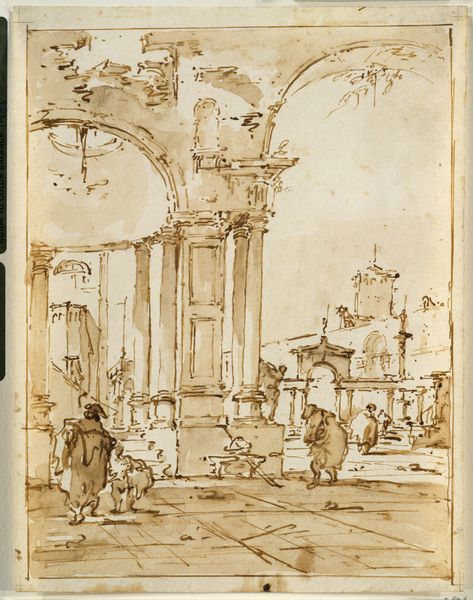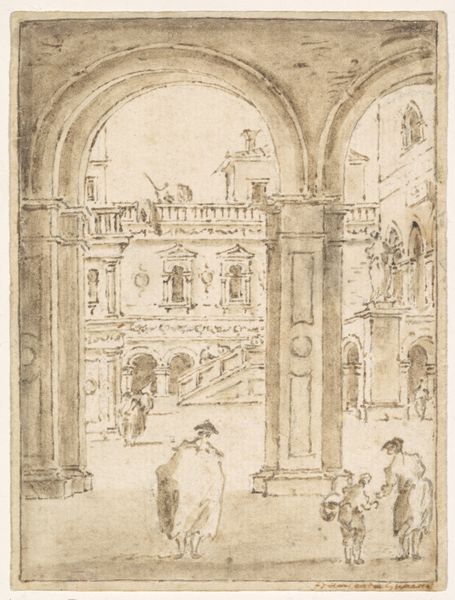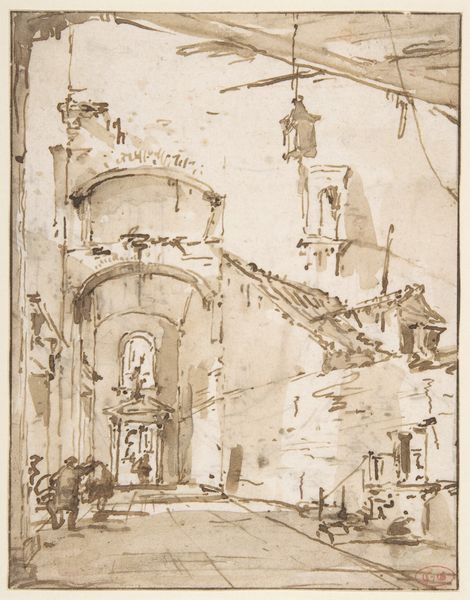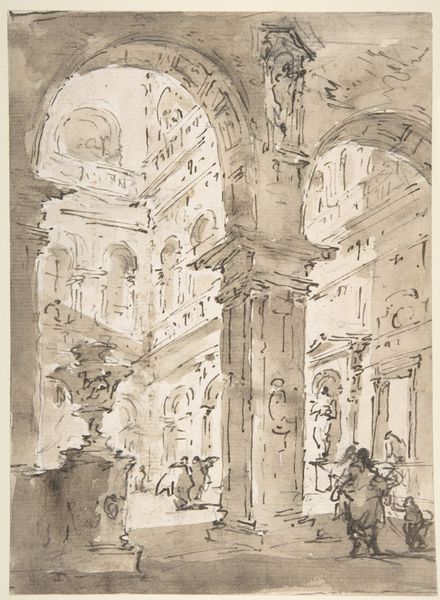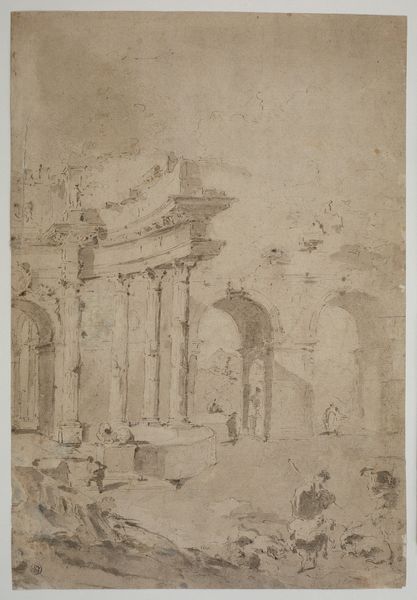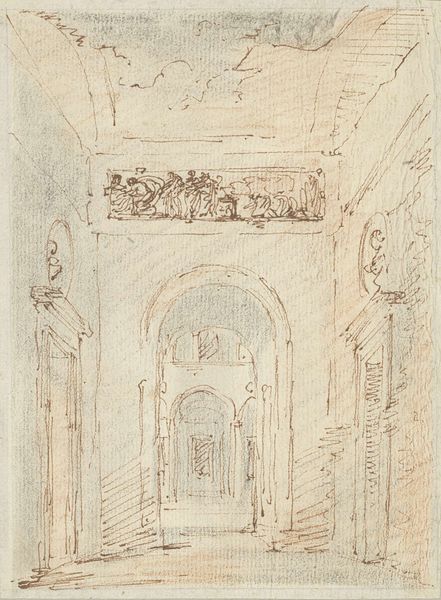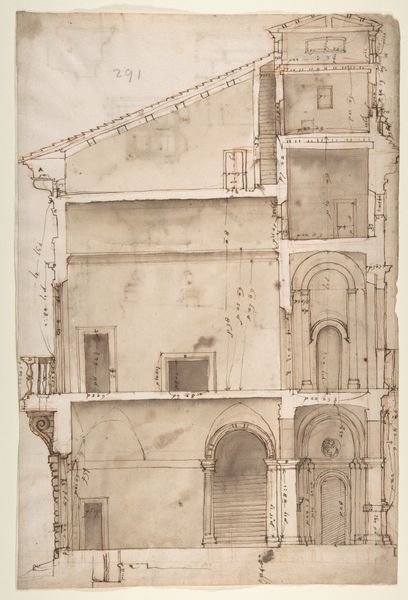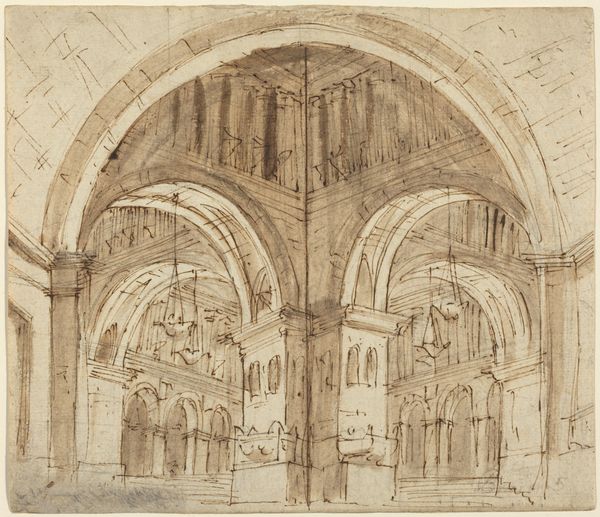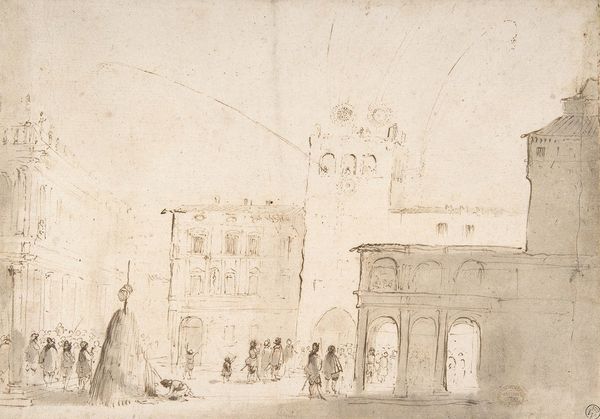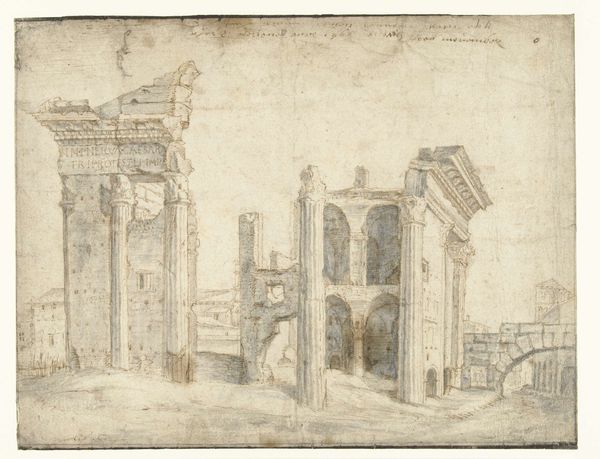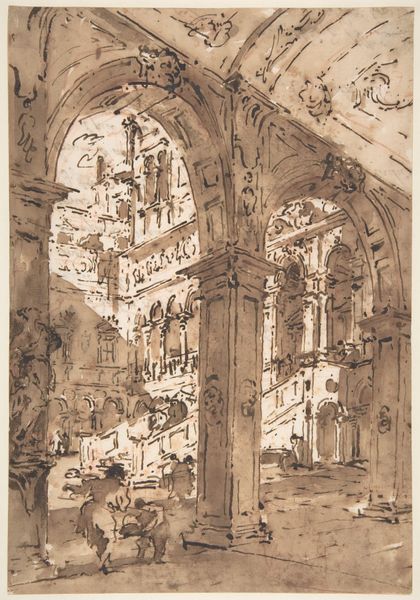
Architectural Capriccio: Grand Staircase Seen through an Archway 1712 - 1793
0:00
0:00
Dimensions: 13 11/16 x 11in. (34.8 x 27.9cm)
Copyright: Public Domain
Curator: Welcome to the Metropolitan Museum of Art. Today we're looking at "Architectural Capriccio: Grand Staircase Seen through an Archway," an etching by Francesco Guardi, likely created sometime between 1712 and 1793. Editor: It’s almost dreamlike. The architectural forms seem both solid and transient. The ink-wash feels fluid and slightly unstable. Curator: Indeed. Guardi’s etching demonstrates an interesting tension between representation and imagination, offering us a glimpse into 18th-century Venice, a city undergoing immense social change as well as aesthetic renovations and conservative restorations. How do the figures interact with the constructed landscape? Who were these people? Were they of noble descent or local traders? Editor: Looking at the labor involved is vital. The artist invested meticulous effort into detailing classical motifs and the clothing and accessories that make up the figures present throughout the image. Yet, it's a print. An etching is reproducible. This complicates any aura of preciousness it might initially project. Consider the economy of image-making at the time, especially for prints and etchings. The labor involved with mass-producing images certainly had a role in a greater accessibility to the public and a potentially diverse consumer base. Curator: Precisely! It really opens up discussions of accessibility. Furthermore, think about the power dynamics embedded within the architectural style itself. Grand staircases were markers of status, announcing privilege. To see the mixing of what appears to be a spectrum of the Venetian class structure makes you think about how Venice operated at that moment, perhaps pointing towards some social fluidity or, rather, class tension. Editor: Right, because the architecture in itself – these imposing structures – speaks to power and authority through specific techniques that also serve as indicators of the skill or craftmanship involved. But by recreating architectural features that borrow from both the Byzantine and Roman architectural vocabularies in Venice during its peak in merchant trade, is this Guardi drawing an ironic pastiche about Venice as a major hub in an earlier era of capitalist enterprise? Curator: A powerful point, given that these ‘capricci,’ or architectural fantasies, were often purchased by wealthy tourists. So what does that say about the consumption of an idealized or dramatized Venice and the commodification of such cultural fantasies? Editor: I find myself seeing the work now not only as a demonstration of skillful artistic practices but also a lens through which we see a highly lucrative industry catering to the desires and values of an emergent form of capital. Curator: What an incisive interpretation; that emphasis on the social implications of material processes allows for understanding it as a reflection on Venice as a site of luxury and aspiration. Editor: Precisely. It changes everything we thought we knew.
Comments
No comments
Be the first to comment and join the conversation on the ultimate creative platform.

